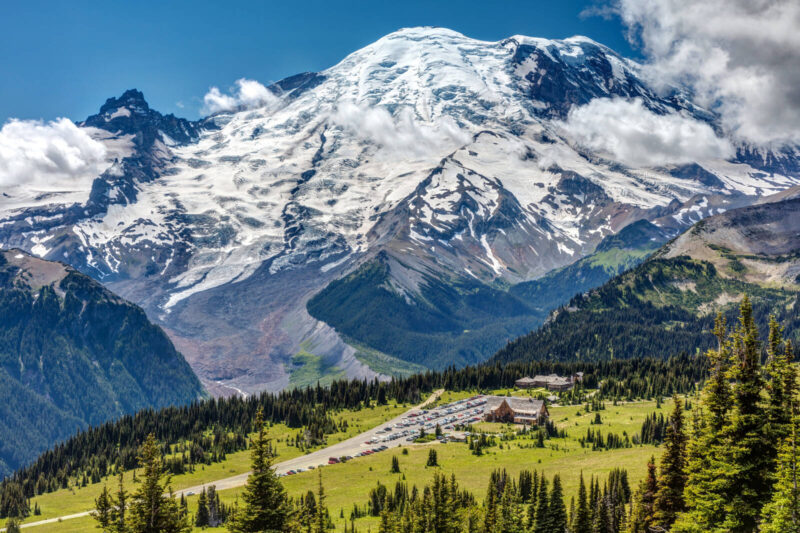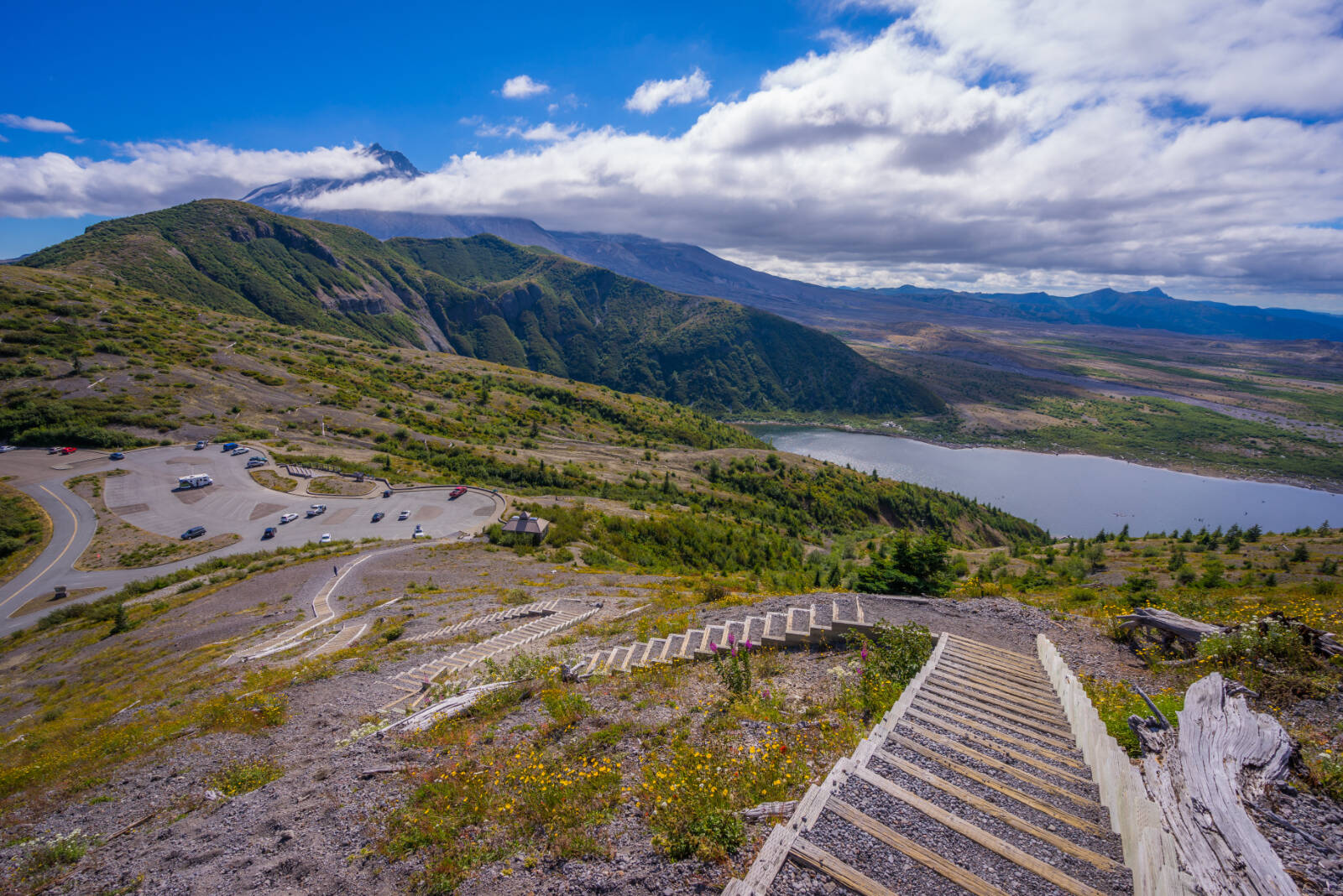By Isabel Vander Stoep, The Chronicle, Centralia, Wash.
What’s so special about Lewis County?
There are none of Washington’s five prominent Cascadian peaks, but three of them are in neighboring Pierce and Skamania. There’s no ocean, but the ocean touches neighboring Pacific, Grays Harbor and Wahkiakum counties while the Puget Sound touches neighboring Pierce and Thurston. Lewis County doesn’t border sales tax safe haven Oregon, but all four of its southern neighbors do.
While being perfectly situated between the two closest metro areas and two international airports, Lewis County has plenty of its own wonders — but nowhere else in Washington are the nearby opportunities so abundant and diverse.
Lewis was Washington’s first county. Established in the 1800s alongside Vancouver County, which no longer exists, it’s also the oldest. I like to think Lewis County is special because it’s the start of things.
It’s the start of Washington’s counties. The start of access roads for both Mount Rainier and Mount St. Helens. The start of the Goat Rocks Wilderness. The start of the Chehalis River (at least, the main stem, the beginning of the headwaters is sort of a mystery) the largest river basin fully situated within the state’s borders. The start of White Pass Ski Area.
Very few people in the world can visit two mountains easily, and absolutely nowhere else do residents have relatively easy access to both Mount Rainier and Mount St. Helens. So, on Thursday, Chronicle photo editor Jared Wenzelburger and I visited both.
It was the first time I’d visited both mountains in one day, and I imagine it will be the last. It’s a lot of driving. Nevertheless, it’s doable, and for Lewis County residents with an open day this summer, I’d highly recommend cashing in on those wonders in your backyard.
The roads to Sunrise at Mount Rainier and Windy Ridge at Mount St. Helens both opened during the last week. The two locations are always the last to open at both mountains due to elevation and snow.
Sunrise is 6,400 feet above sea level, while Windy Ridge sits above 4,200 feet.
Sunrise is accessible from the road to Ohanapecosh just past Packwood, and Windy Ridge can be reached by taking state Route 131 out of Randle and following until a right turn at Forest Road 99. The rest of the way is somewhat treacherous, but spectacular.
On a clear day from Windy Ridge, one can see Mount St. Helens, Adams, Rainier and Hood. From Sunrise, besides the closest drive-up view of Rainier, one can see the expansive Tatoosh range.
READ MORE: Visiting Mount St. Helens is inspiring and alarming all at once
From The Chronicle in Centralia to the Sunrise Visitors’ Center to Windy Ridge Viewpoint and back to The Chronicle, we found, is over eight hours of driving. After leaving in the late morning, we hit Sunrise in the early afternoon and Windy Ridge an hour before sunset.
But we learned fun things, too. We saw and spoke with people from all over the world. A couple at Windy Ridge, originally from Colombia but now residents of Atlanta, Georgia, were visiting Washington for the first time. They’re staying with a friend in Packwood.
People at Sunrise spoke languages I’m not smart enough to recognize and name. The vistas were beautiful, the wildflower blooms were bright, bold colors.
What struck me most of all, though, was how different these two places are.
Mount Rainier and Mount St. Helens are sort of like friends in a teen sitcom.
Rainier is the popular, pretty one who’s had it pretty easy. St. Helens is edgy and emo; she’s been through a lot in her lifetime.
They’re both beloved characters, but I’ve found this comparison to be increasingly true in the last few years. With huge booms in tourism around Mount Rainier, the National Park is moving toward a timed entry system to cut down on overcrowding.
The last few times I’ve been to Mount St. Helens, I’ve joined fewer than 30 cars in the parking lots (I’ve frequently seen big groups of motorcyclists, though).
While visiting on Thursday afternoon, there were just two other vehicles.
Mount St. Helens is a National Volcanic Monument. It’s been left largely untouched since the 1980 eruption turned the northern face into a moonscape. With that, it has been a scientific haven for biologists, geologists and many other researchers. There’s no place like it in the entire world.
Mount Rainier, on the other hand, is teeming with marmots, chipmunks, birds, butterflies and rich, green meadows. She’s colorful and glorious. Her prominent peak has earned the simple Washingtonian nickname, “The Mountain.”
But Mount St. Helens is entering that stage of the show where the popular girl gives her a makeover and everyone realizes she has been beautiful all along.
Wildflowers are growing back. Birds, goats, elk, butterflies and more wildlife are coming back with strength. The Mount St. Helens Institute intends to more lodging opportunities and more interpretive programs for families and residents.
A large grant from the Cowlitz Indian Tribal Council last year will go a long way toward kicking off that vision.
Even these two giants Lewis County sits between prove the diversity of recreation around us.
John Muir wrote that “the mountains are calling.”
How lucky are we to just pack up and go?
Plan your adventures throughout the West Coast at westcoasttraveller.com and follow us on Facebook and Instagram @thewestcoasttraveller. And for the top West Coast Travel stories of the week delivered right to your inbox, sign up for our weekly Armchair Traveller newsletter!












 Yukon’s SS Klondike is getting an escape room
Yukon’s SS Klondike is getting an escape room